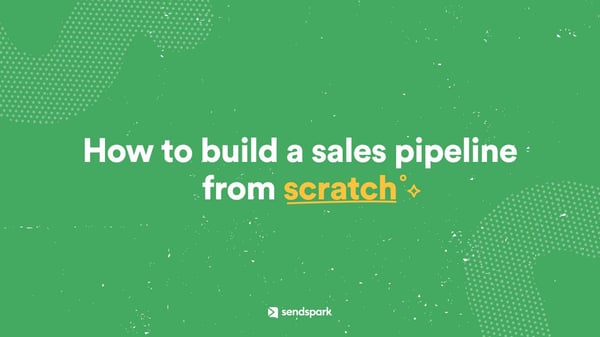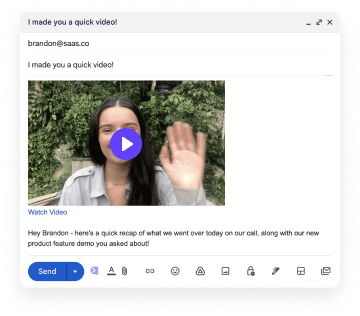Creating a consistent sales process can be tough. We know this from our own experience and from working with hundreds of sales teams as a software provider.
Things get a lot easier when you know what you’re doing. And to help you figure things out, we've created this guide on how to build a sales pipeline from scratch.
Below, we explain every step in detail. We go through the definition of sales pipeline, the stages of creating one, and share tips on improving results and performance over time.
Let's start with...
What is a sales pipeline?
A sales pipeline is a visual representation of your sales process. It usually has the following stages and sub-stages:
- Prospecting
- Lead generation
- Pitching
- Qualification
- Sending proposals
- Negotiating
- Closing
Informally, “sales pipeline” is synonymous with "sales funnel" and “sales process”. Building your sales pipeline is the same as feeding your sales funnel. Creating a sales pipeline is the same as designing your sales process. And so on and so forth.
The major difference is that a sales pipeline is visual, whereas sales process is verbal and theoretical.
How to build a sales pipeline in 4 stages
Building a sales pipeline from scratch can seem difficult. But all you need to get started is a simple system with the 4 steps below.
1. Prospecting
You can have the best sales pipeline in the world - but if you aren't feeding prospects into it, you won't get any sales. That's why effective prospecting strategies and tactics are key here.
The most common ways to prospect today are:
A. Google
Use Search to find prospects in your target audience. For example: looking to serve lawyers in Arizona? Look up queries like "personal injury AZ" and "divorce lawyer Arizona". They’ll help you find hundreds of leads, fast.
The main benefit of this method is that it gives you qualitative information on your leads. Google helps you find articles your prospect has published; their social channel content; news they've been featured in. All of this lets you craft personalized outreach videos and emails later on.
A drawback of Google is that finding and researching prospects can take a while. You can learn a lot about each potential customer - but research takes time. This kind of work is best outsourced to qualified virtual assistants and junior sales team members.
B. Apollo
Apollo is a popular sales prospecting tool. It's basically a vast database of B2B leads and prospects. It helps sales professionals find leads using filters like...
- Company size
- Company location
- Industry
- Job title
- Annual revenue
- And more.
Apollo is handy if you need a large number of prospects. Just create filters to match your buyer persona, and Apollo will give you hundreds or thousands of results. This helps save time and prospect at scale.
The downside to Apollo is that the information you get is a little limited. You only get a specific data set that revolves around the above points. If you want qualitative information, you'll have to use Google and social media networks to get it.
C. Sales Navigator
LinkedIn Sales Navigator is an increasingly popular prospecting tool. It lets you look up people and companies using filters like:
- Seniority level
- Industry
- Company size
- Location
- Social media profile keywords
The filters are mostly similar to Apollo's. A major difference is that Sales Navigator uses social profile data to identify prospects. This data is sometimes more accurate and recent than what you get with Apollo.
Something we really like with Sales Nav is that you can see prospects' social information: their previous workplaces, interests, shared content, etc. This helps a sales rep identify people who match their ideal customer profile. It also makes it easy to create targeted outreach messages.
A huge downside to Sales Nav is that you can only connect with 400 people each month. If you need a lot of prospects to maintain a healthy sales pipeline, you'll find this limiting.
2. Reach out to prospects
Once you have a sales prospect list - we recommend starting with 300-400 people - it's time to start outreach.
In the modern era, email is the most popular outreach channel. 80% of prospects prefer it and 78% of reps use it (Spotio).
LinkedIn has also been massively popular since the start of the pandemic. It's where many decision makers hang out, and it has high engagement rates for outreach.
2 tips can make your outreach efforts a lot more effective.
A. Personalizing your emails
Personalized messages that include personal info, first names, and relevant information work best. They generate up to 58% of revenue (Snovio), with higher open and response rates.
Writing personalized emails at scale can be tough - but this is where our second tip comes in.
B. Using videos for lead generation
Videos are the best way to reach out to prospects. Emails with personalized videos get reply rates of up to 90% - and are a powerful tool in your sales team's arsenal.
Another benefit is that personalized videos are fast and easy to produce. Sendspark lets your team members record, upload, and share them in minutes - all from the comfort of their browser. And all you need to get started is a free account.
3. Qualify and propose
After you’ve reached out to prospects, it’s time to qualify them. In laymen's terms, this means "seeing if you're a good fit". Qualifying usually means checking the client can afford you, benefit from your services, and provide the internal bandwidth to work with you.
Once you've qualified someone - usually via Zoom call or asynchronous communications - you can send out a preliminary proposal. This will typically include:
- Scope of work
- Time frame
- Pricing
Videos come in handy here too. They give you an easy way to talk to walk people through proposals without asking for live meetings. They're also easy to send out to clients at scale.
4. Closing deals
If you offer a recurring service like we do here at Sendspark, you can send a link to your sales page after getting a preliminary "yes". Otherwise, you will want to send out a contract and get the other party's signature. This is easy to do using virtual tools made for proposals and contracts; we cover our favorites here.
---
That's pretty much it. Prospecting, reaching out, qualifying and proposing, then closing deals is all you need for a healthy sales pipeline.
5 tips for an unstoppable sales pipeline
Want a more effective sales pipeline? Use these 5 tips to maximize your results.
1. Prospect and pitch at scale
It's hard to build sales pipeline if you don't have enough prospects. Unfortunately, prospecting is hard; 40% of salespeople identify it as the hardest part of their job.
So what you want to do is help your sales reps prospect at scale. Give them the tools they need to identify potential buyers quickly and easily. Once you do, help them pitch prospects at scale - for example, using Sendspark.
2. Refine your target audience
Selling to the right people improves conversions through different stages of the sales process. To get there, use qualitative and quantitative data to refine your target audience.
Qualitative data sources
- Customer feedback
- Customer interviews & surveys
- Product use data
- Hotjar and other usage recording software
Quantitative data sources
- Google data for Search and PPC
- CRM
- Website usage statistics
3. Segment your prospects
Segmenting leads and prospects helps send targeted messages that perform better at scale. The more you chunk down your total adressable market, the better your sales funnel performs.
So segment to the best of your ability through the sale. Use geo location, socio-economic factors, psychographic data, and behavioral data to help yourself.
Where possible, make sure to use internal data to segment customers. For example, someone's actions during the qualification stage can tell you how to best close the deal with them later down the line.
4. Standardize processes
Never ask a sales rep to wing any part of the sales process. Instead, have yourself or a qualified sales manager create playbooks, SOPs, and standardized processes.
An added benefit to this is that standartization makes it easy to onboard and train new employees.
5. Analyze your results
Measure important KPIs and OKRs all the time. This will help you know when something works (or no longer works), helping create a better sales cycle.
Conclusion
Now you know how to build a sales pipeline and improve its performance. Want to help your team get better results across each pipeline stage - especially pitching, proposing, and closing?
Consider using Sendspark. Our software will help your team record, upload, and send out high-quality videos at scale. Buyers love Sendspark videos, and sales reps love how easy it is to create and share them.
All you need to get started is a free account!



